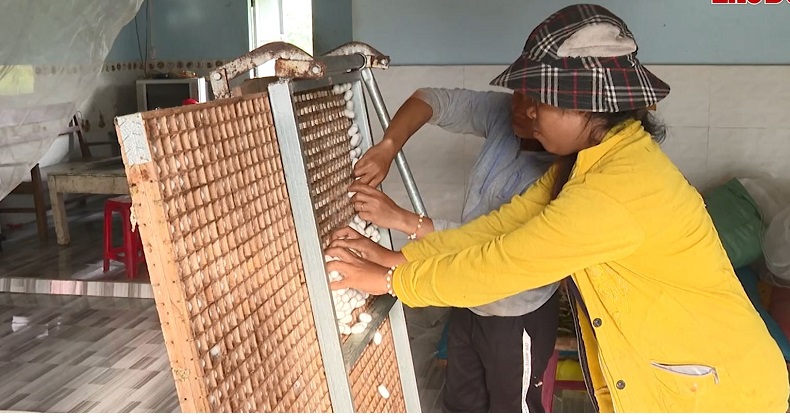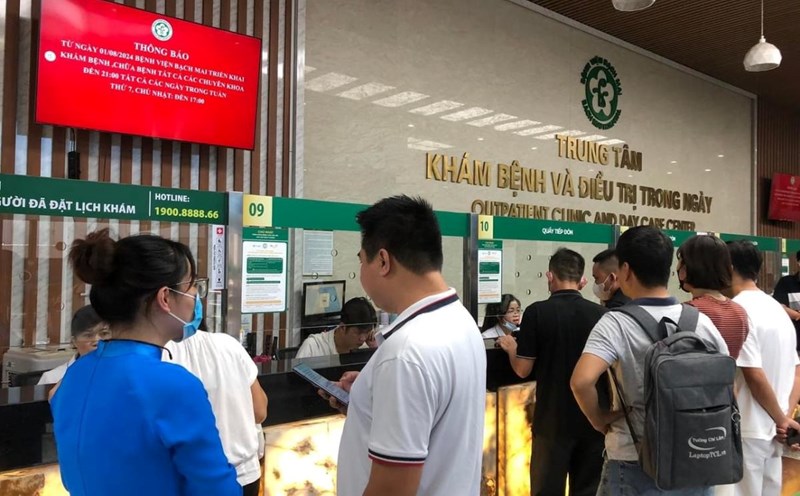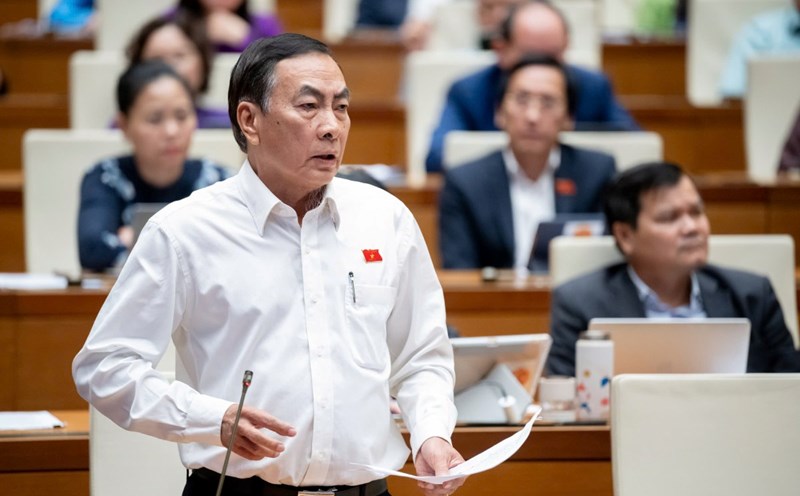Dramatic poverty reduction after 20 years
When it was first established in 2004, Dam Rong district faced numerous difficulties, with an average income per capita of only 2.6 million VND/year and a lack of infrastructure...
In 2005, the entire Dam Rong district still had 4,270 poor households (accounting for 73.19%). Of these, 3,136 households were poor ethnic minorities, accounting for 85%.
By the end of 2024, the total number of households in Dam Rong district was 14,762, with 61,648 people (according to the results of the poverty screening). Of which, the poverty rate had decreased to 390 households (2.64%), down 70.55% compared to the poverty rate in 2005; the number of near-poor households was 644, accounting for 4.36%.
There are 356 poor ethnic minority households, accounting for 4.21% of ethnic minority households. The rate has decreased by 80.79% compared to the rate of poor ethnic minority households in 2005.
Previously, Mr. Ro Ong Ha Nam’s family lived in a makeshift house, had no land for production, and had an unstable income from working for hire. Therefore, the family’s life was full of difficulties and worries.
Thanks to a preferential loan of 100 million VND from the Social Policy Bank, Mr. Nam has improved the land and invested in expanding his coffee garden. The local government also supported seedlings and agricultural tools for silkworm farming, helping his family diversify their income.
In 2023, the Fatherland Front provided an additional 50 million VND to help Mr. Nam’s family build a solid and spacious house. Currently, his family has not only escaped poverty but also has a stable income from growing coffee and raising silkworms.
"Now, my family's life is more fulfilling. This is the motivation for other disadvantaged people to rise up and escape poverty," Mr. Nam added.
Similarly, in the past, Ms. Co Lieng K'Hoa's family in Da Long commune had many difficulties. They worked hard but were still poor and deprived.
"After being trained in silkworm farming, my family's life has improved significantly. My children can go to school, and I am currently saving to repair my level 4 house," said Ms. Co Lieng K'Hoa.
According to the leader of the People's Committee of Dam Rong district, looking back on the journey of more than two decades, Dam Rong district has proven that, with the consensus of the government and people, no difficulty is insurmountable.
The clear changes in the life and appearance of the district are proof of the strong transformation towards a sustainable future in the coming time.

Continue to improve the quality of human resources
Mr. Truong Huu Dong, Chairman of Dam Rong District People's Committee, said that since its establishment, the district has set the goal of improving infrastructure, developing socio-economy associated with sustainable poverty reduction among the people.
"The district's goal is for people to have stable jobs, escape poverty sustainably and settle down in their homeland," said Mr. Dong.
To improve people's lives, vocational training and improving the quality of human resources for rural workers are focused on. This activity is especially aimed at ethnic minorities and closely follows resolutions, directives, and socio-economic development programs.
Vocational training forms are designed to suit local characteristics, supporting the conversion of crop and livestock structures, helping people apply them effectively in production.
Besides, Dam Rong district has focused on exploiting agricultural potential, promoting deep processing and attracting investment, creating momentum for the land rich in cultural identity to develop.
With the motto “give a fishing rod, not a fish,” Dam Rong district has innovated vocational training, making it modern and flexible, improving labor skills to create jobs and adapt to new technology.
Dam Rong District also closely links vocational training with the labor market, meeting the needs of businesses and society. The biggest goal is to create sustainable livelihoods, helping people and ethnic minorities develop the economy and improve their lives sustainably.
In 2024, Dam Rong district organized 16 vocational training classes for more than 300 students, including 9 classes on mulberry cultivation and silkworm raising, and classes on durian care and agricultural machinery repair. Thanks to that, many people, especially ethnic minorities, have the opportunity to improve their livelihoods.
Along with vocational training, Dam Rong district has coordinated with businesses to implement job creation projects. Typically, in 2023, the automatic silk reeling factory in Da R’sal commune will operate, creating jobs for 60 workers, mainly ethnic minorities.












